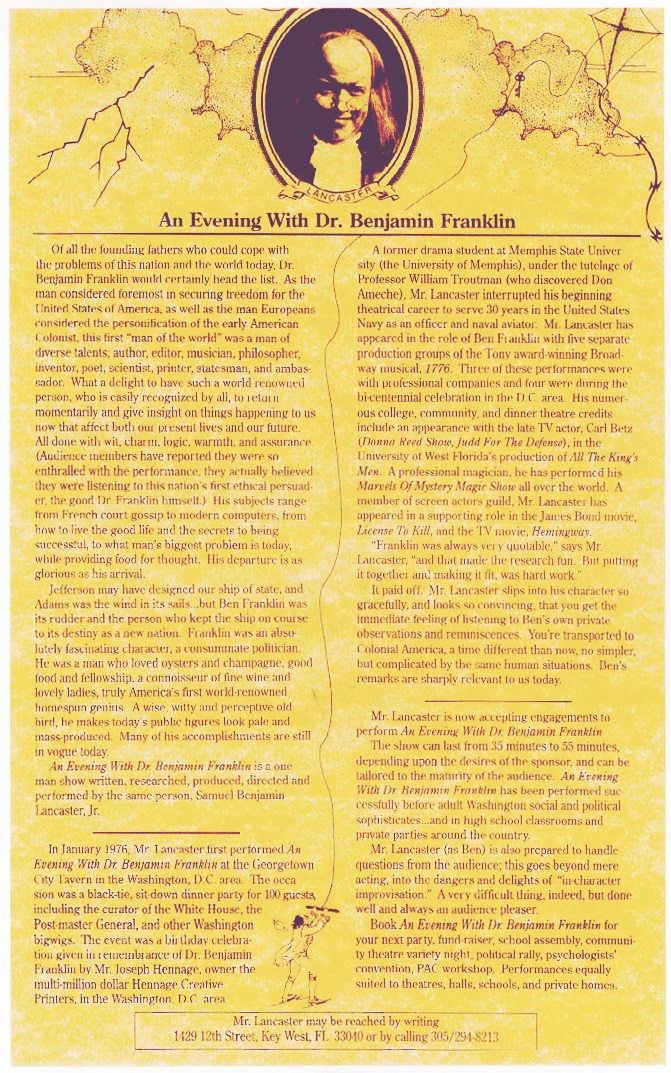Transcript of Oral Interview -- May 10, 1996
Pensacola, Florida
Sam Lancaster, Key West, Florida.
I was a Flying Midshipman, starting in one month after high school graduation in 1946. I went through the program and I got into the TAR [Training and Administration in the Reserves] program in the year … uh … 1950, I think it was. Anyway, I was stationed in NAS New York and my introduction to the Tar Program of Training and Administration of Reserves was that I was assigned to the VS [anti-submarine] Program as a Flight Training Officer.
My first understanding after being checkout out in the S2F by a fleet qualified pilot – carrier pilot – was that they couldn't remember all the connections of safety required in the electrical power panel, so we had a bunch of--a series of--sliding boards in which we had pictures of the cockpit, and what we did initially was to hang colored disks over the pictures of the instruments to indicate which electrical power system supplied that instrument.
Then I figured, "What the devil, you've got color code systems on the lubricating system, on the oil system, the hydraulic system; you do not have anything on the electrical power system." I said, "why the hell not?"
So I just decided we'd take the … when I found out you could 'add an instruction' from the … uh … the Bureau [Bureau of Aeronautics], that you could take one S2F and doctor it up the way you think it should be, and then see how it works out and then write it up.
Well, this we did. We took the electrical power panel, and designated a color for each section--we had a switch in the overhead on the S2F (at that time it had the main inverter, the standby inverter, the battery switches, and so forth). So what I did was get the color of yellow to the regular electrical system, the color red to the emergency system, and the batteries became the green system, and the other system we had, which was orange, and accordingly, all the circuit breakers were included in this same color arrangement, mainly because nobody [laugh] knew which circuit breaker went where; and so if it's color coded, in the dark of night, all you got to do is run your flashlight over and then take your little circuit breaker wrench and POP 'EM OUT! It was no delay, it was just “get the battery system off the line” or whatever, or get stuff [word garbled]… whatever … we could unload the system [said loudly].
Well, we put it together and … uh … the next thing I know, the two fellows that worked for Grumman in the Squadron VS-837 were working in Human Engineering. They looked at what I had, and suddenly I saw surprise come over their faces, because I had heard from the Bureau; we only heard once from the Maintenance Officer at NAS New York, says, "Now I know why they check you with your color blindness. It's to see what Sam's system is working."
Anyway, the next time I encountered anything after we did all the publication and we tried to teach the kids how to use it, ‘cause I went to the fleet with VS-32 and tried to promoted it with them. They looked at it and thought it was a great system, but no other action was taken. I then went to … was assigned to NAS Lakehurst [NJ] … to the TAR Program, the NARTU [Naval Aviation Reserve Training Unit] there, and … uh … but I never heard any more about it until Grumman started producing their first Gulfstream airplane, and at that I discovered that the color code system that I had given to the two guys in Human Engineering was right there on my panel system.
I looked up in the overhead, the overhead had it on it, and I said, "God, we're going to save some lives.[softly]." And that's all I can say.
[Interviewer]: That’s terrific.
[Sam]: And that’s all I’m going to say.
[Interviewer]: There's not an airplane designed today that does not have that system in it, because nobody can possibly remember all the systems the color coding and diagrams you can do it easily … much easier. Been a revolutionary development in aviation.
[Interviewer]: Did you get credit for that?
No. That's what broke my heart. And I never wanted any money for it. I felt like salvation of lives of lives in aviation is more important than money. You see, what the hell's money going to do? It's not going to make it work better. Where it made it work better as described to me now is they've got lineage between the lines and switches and circuit breakers – this follows this and you follow it there. And what I did was I put the dots up beside the instrument on the panel at the first power source was the first power going; so if you got the main inverter on, it's yellow – the switch shows you the first dot, and right underneath it is a red dot which means the main inverter is next. If this thing quits working, and you get your little flag come up in the panel there for the instrument, you reach over and it says 'red' – you throw the red switch. It's automatically the panel thing kicks out. They could remember that. They can't remember all that – and I said, "It's easier to follow," and I said. "The idea about the circuit breakers really used to irritate me because I sat for hours on end trying to memorize them all. It's impossible; besides that, they make one service change – instruments change, passing all over the place. And for that reason, I felt like, "Here's something that I can contribute, and that I just wanted the recognition – I did not want anything else, the recognition office – never came forward and everyone pooh-poohed me, except the Maintenance Officer because he'd been in a VS Squadron and he knew what I was talking about, and all these other guys said, "Oh yes, um hmm."
And that did it. But it really was an exciting thing to walk into the Gulf Stream and see what you have conceived of. But we did mail it to the Bureau and we never really heard anything. ‘Cause you never heard anything from Grumman. I considered about writing to them, the President here, about a year or so ago, but I'm getting so old now that I get real lazy in my thinking processes. But I still have …
[Unidentified speaker]: I thought that was important …
[Interviewer]: Did you want to say anything …
He did. He just said …
[Unidentified speaker]: Well, as I said, there's not an airplane designed today that doesn't use the system of color coding and lines to assist the crew in determining what they should do in case of emergency …
Is the system that is used for …? since then … is it universal?
[Same speaker]: Oh yes, I've never flown a modern airplane that didn't have this kind of a system.
Which is … I mean it's like hydraulics is all in yellow; blue/yellow.
[Same speaker]: Yeah, yes …
… this is red, this is yellow; those things remained the same …
[Same speaker]: Yeah …
That's thrilling; that really is thrilling.
[Same speaker]: Hydraulics are green … right … absolutely …
I'll tell you …
[Second unidentified speaker]: Makes me think of the battleship North Carolina where all the pipes are …
Right, where does this thing go?
[Second unidentified speaker]: Or better still, what does this thing do?
Well, I thank you …
[Same speaker]: I think it's very important …
[Interviewer]: I think it's very important to have that stuff in there – this will be in the Museum …
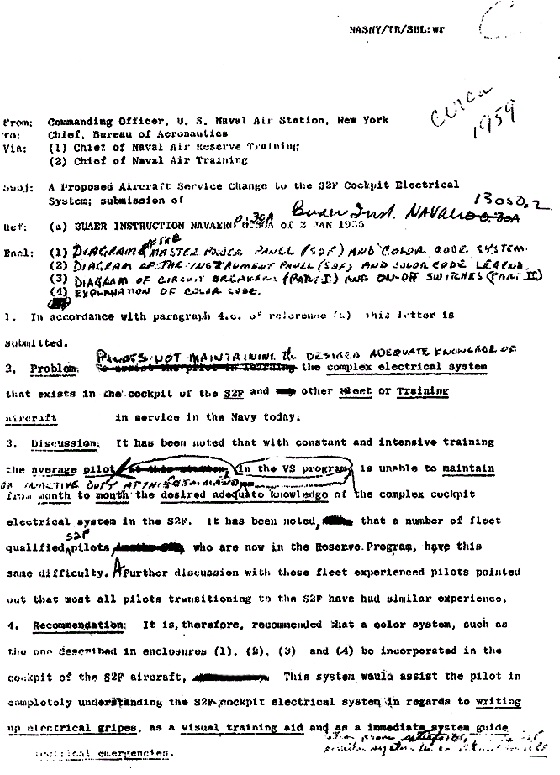
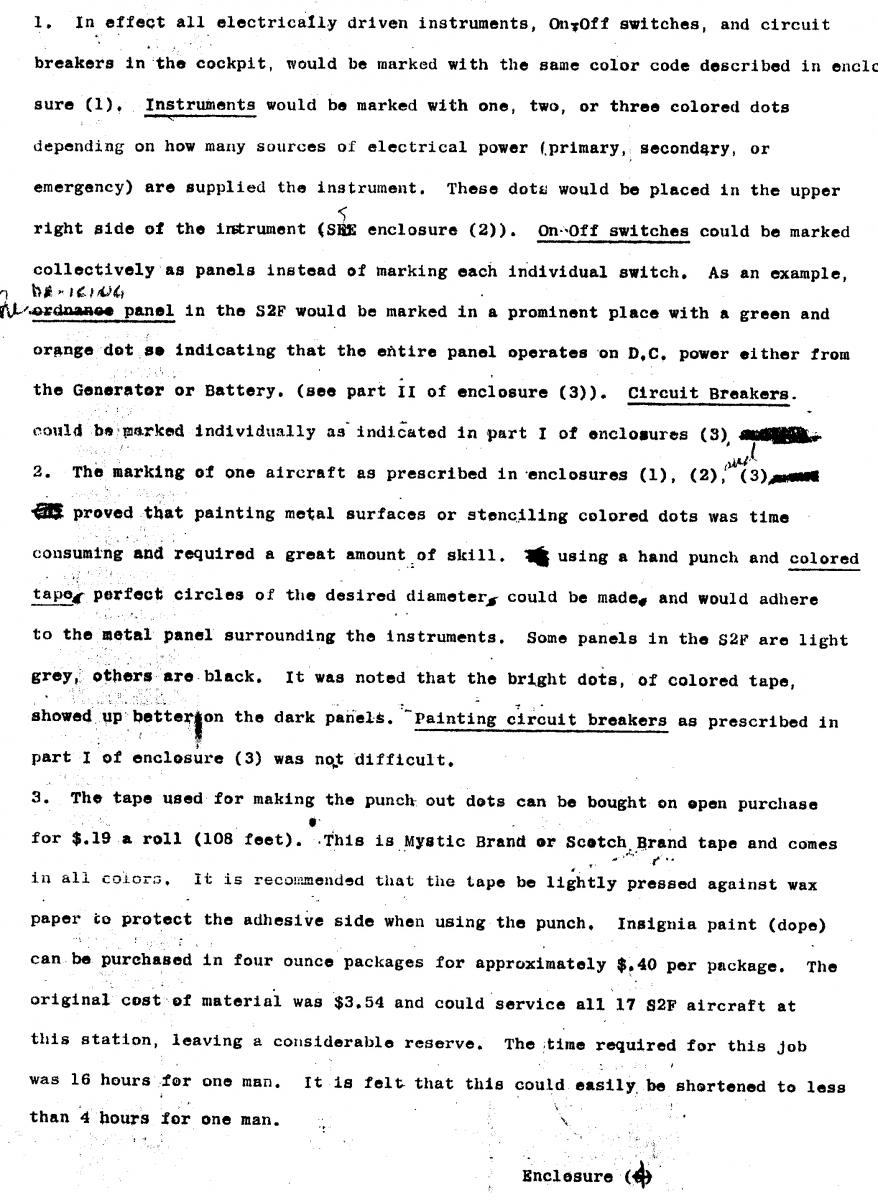
Color-Code System for electrical power system devised by Sam Lancaster
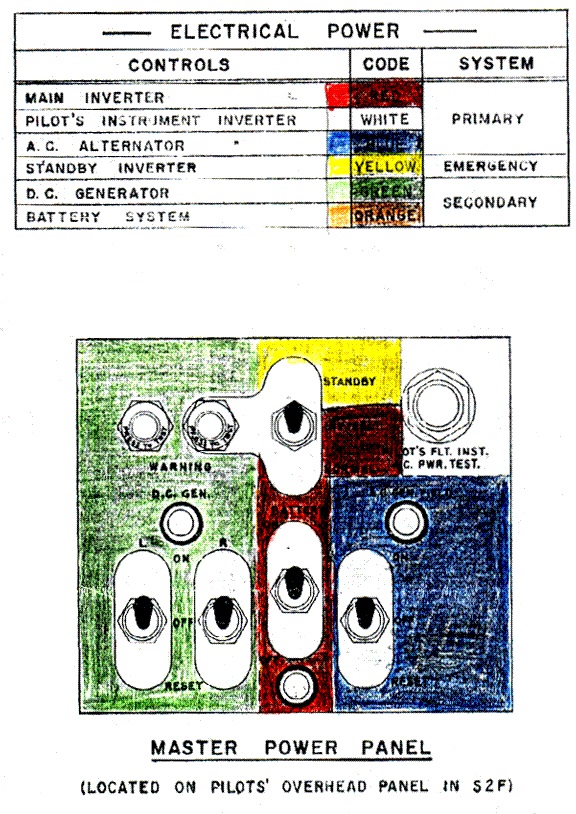
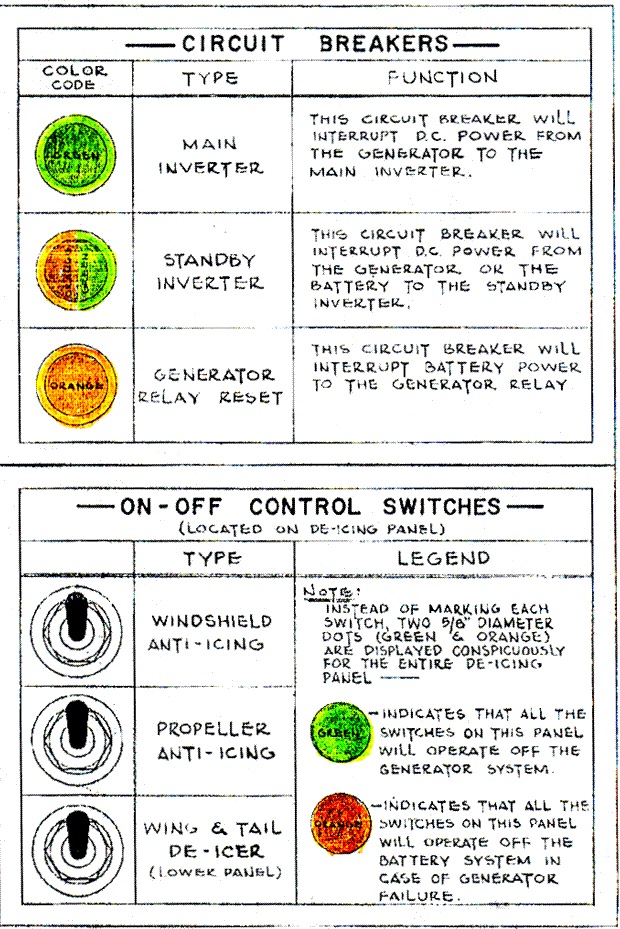
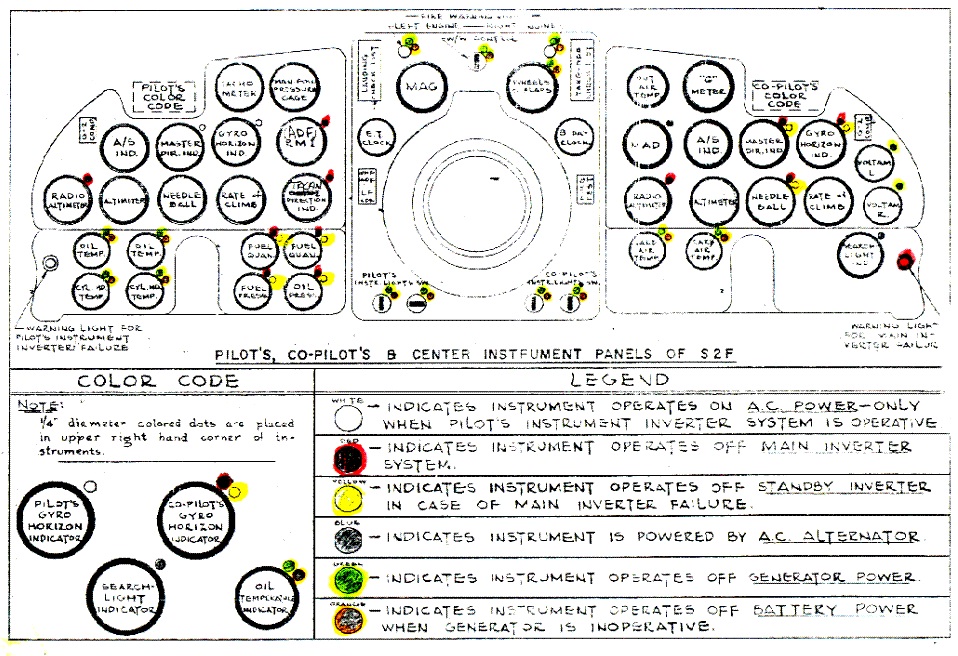
Sam’s Impersonation of Benjamin Franklin

